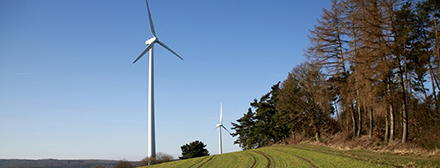Renewable energy and renewable timber may soon be produced side-by-side, with the passage last week of legislation to enable clean energy developments such as wind energy to be established in New South Wales State forest pine plantations. Source: Timberbiz
NSW Parliament passed amendments to the Forestry Act 2012 as part of the Energy Legislation Amendment Bill to facilitate the opportunity to establish renewable energy infrastructure in State forest pine plantations.
CEO Forestry Corporation Anshul Chaudhary said the opportunity to add to the sustainability of the already renewable timber resource was exciting.
“Our State-owned pine plantations produce enough renewable timber to build around 35,000 homes a year, and we can now explore opportunities for these plantations to also produce renewable energy to power those homes,” Mr Chaudhary said.
“We’ve seen great examples of renewable energy being produced in plantations interstate and overseas while maintaining a strong supply of timber and it’s exciting to open the doors to this new opportunity to grow renewable energy production in NSW.
“As well as boosting the State’s renewable energy production, new renewable energy developments like wind energy within pine plantations will also augment the strong regional employment in the forest and wood product industries with new employment opportunities in renewable energy development.
“Maintaining a sustainable supply of essential timber products from the State forest pine plantations remains our primary focus so, importantly, any renewable generation infrastructure would be limited to a small area of the softwood plantation estate.
“In addition, any plantation trees removed would be offset with a ‘two for one’ deal, actually increasing the area of public land dedicated to growing pine plantations for our future timber needs – so this is a real win-win for renewables in NSW.
“Forestry Corporation is not currently considering any specific proposals for renewable energy production, but with State forest pine plantations located across more than 230,000 hectares and many near existing energy infrastructure, there is a lot of potential to explore.
“The legislative change is the first step in a process that allows Forestry Corporation to go to the market for proposals for new renewable energy opportunities.
“Any opportunities within pine plantations would be required to follow the existing planning approval process, which must consider the environmental impact, noise, landscape and visual impacts, traffic and transport issues, hazard and risks, heritage, water and soil impacts, waste management and complete community consultation.”






